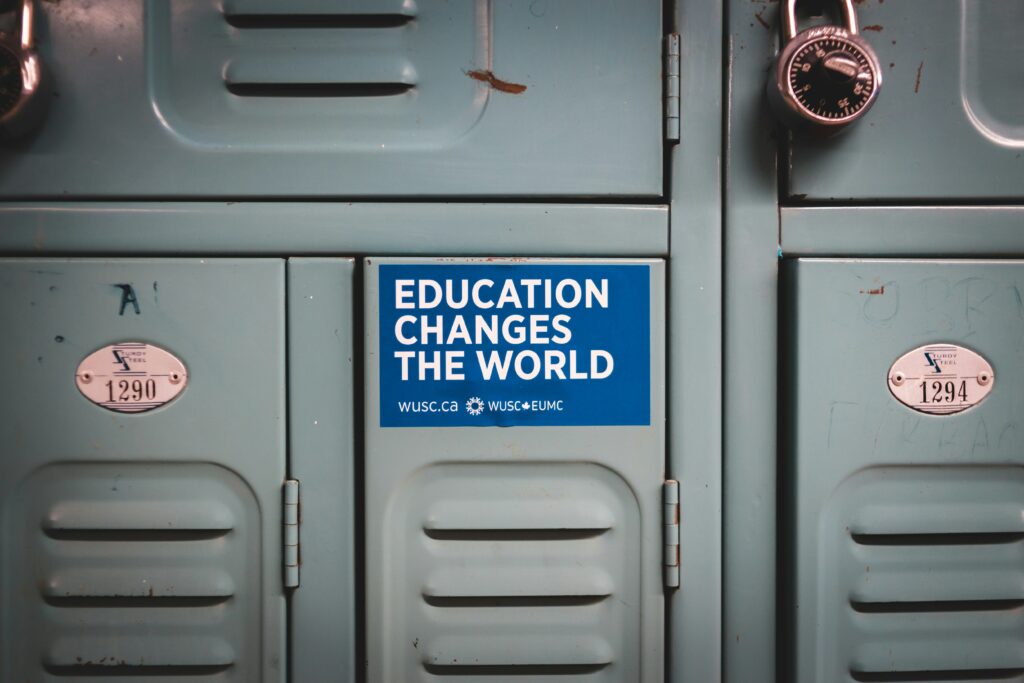Introduction
Education policy used to be something most parents glanced at—maybe during enrollment season or in a quick email from the school. Not anymore. Today, what gets decided in education boardrooms doesn’t just shape classrooms—it reshapes kitchens, calendars, and the way families live day-to-day.
From grading systems to tech mandates, from cafeteria rules to discipline frameworks, school policies are increasingly spilling into the home. They determine who needs tutoring, what’s allowed on devices after dinner, and how parents organize their workdays around their kids’ learning demands. It’s no longer about “what school your kid goes to,” but how your values, schedule, and strategies align—or don’t—with a constantly shifting education system.
For modern parenting, the job has expanded. You’re not just raising a child—you’re navigating a maze built in part by policymakers. That might mean more involvement, more hard choices, and more emotional bandwidth. But it also means more room to shape how your family shows up in this evolving landscape.
Shifting Curriculums and Home Dynamics
Educational policy changes don’t stop at the classroom door—they flow directly into the home. As curriculum standards evolve to prioritize different skill sets and subjects, parents are finding themselves more involved than ever in daily learning routines.
Learning Standards at Home
New standards for reading, math, and especially science and technology are influencing not just what children learn, but how they learn. Many assignments now assume a baseline of at-home support, which shifts a portion of the instructional burden onto families.
- More inquiry-based and project-style homework
- Higher reading comprehension expectations starting in earlier grades
- Emphasis on applying critical thinking beyond worksheets
This means parents are often expected to interpret lessons, explain concepts, and supervise learning beyond simply checking homework.
Parents as Co-Teachers?
With the classroom extending into the kitchen table, many parents now act as secondary educators—sometimes by necessity, not choice. This dual role comes with both meaningful engagement and added pressure:
Benefits:
- Stronger academic bonds between parents and children
- Improved awareness of what’s being taught and how
- Opportunities to reinforce values through learning
Challenges:
- Increased time demands on working parents
- Frustration around unclear assignments and changing teaching methods
- Risk of widening academic gaps among families with limited resources
Spotlight: The STEM Surge
A clear example of curriculum shift is the increased focus on STEM (Science, Technology, Engineering, and Math). Schools are embedding more coding, robotics, and experimental learning in early grades, creating a ripple effect at home.
Emerging Trends:
- Rising enrollment in STEM-themed after-school programs
- Higher demand for accessible educational tech and tutorials
- Families seeking out science kits, coding games, and maker tools
While this emphasis prepares students for future careers, it also forces parents to find additional support—sometimes at high cost—to keep their children competitive and engaged.
The modern learning landscape demands a partnership between schools and homes. As curriculums grow more complex and specialized, so too must parents’ strategies for supporting their kids’ academic journeys.
Standardized Testing Pressures
Test-centric policies aren’t just shaping lesson plans—they’re redesigning how families live. In districts where test scores hold funding or teacher evaluations hostage, the pressure leaks out of classrooms and straight into kitchens, cars, and bedtime routines. Kids are practicing reading fluency during dinner. Math drills happen during morning commutes. Parents are no longer just caregivers—they’re unofficial coaches, tutors, and sometimes therapists.
In response, many parents double down. They hire private tutors, trim extracurriculars, and prioritize sleep schedules around test weeks. Some rearrange entire routines just to optimize for peak performance. But the cost is steep: increased anxiety, parental burnout, and children learning to equate worth with results.
Meanwhile, the divide between test readiness and real understanding deepens. Children may memorize answers without grasping concepts. Parents, caught in the crunch, swap meaningful learning moments for flashcards and practice tests. The irony? In chasing scores, we’re sometimes robbing kids of the joy of learning.
Test scores may give schools data, but for families, they rarely tell the full story.
School Choice and Its Ripple Effect
School choice may offer families more options, but it also introduces complexity that many parents aren’t prepared for. As policies around vouchers, charter schools, and magnet programs expand, parenting becomes less about navigating a single school system—and more about strategizing a child’s educational trajectory.
The New Landscape: More Options, More Confusion
What used to be a straightforward process—enroll your child at the neighborhood school—is now a maze of applications, deadlines, and eligibility criteria.
- Vouchers give families public funding to attend private schools—but often come with limited availability and unclear guidelines.
- Charter schools operate independently from local districts, creating options but also inconsistent standards.
- Magnet programs offer specialized curriculums, but entrance often depends on test scores or lotteries.
Parents are expected to become education policy experts overnight just to make the “right” decision.
Decision Fatigue and Second-Guessing
With so many choices comes a common fear: what if you choose the wrong school?
- Parents worry about academic rigor, location, values alignment, and long-term opportunities.
- The pressure to “optimize” a child’s education leads to increased anxiety—and often, guilt.
- Constant comparisons between schools create an environment where no choice feels entirely satisfying.
The result is decision fatigue: emotional and mental exhaustion from researching, weighing options, and living with uncertainty.
Unequal Access, Unequal Outcomes
Not all families have equal opportunity to benefit from school choice policies.
- Families with more resources can hire consultants, tour schools, and afford transportation.
- Low-income or under-resourced families may lack access to timely information or flexibility to even consider certain options.
- This widens educational gaps within communities, as some children gain access to enriched environments while others are left in underperforming schools.
Instead of fixing inequality, school choice often reshapes it—shuffling privilege around while leaving systemic challenges intact.
Navigating the Ripple Effect
Parents responding to school policy shifts are not just making decisions about education—they’re shaping home routines, budgets, and even where they live. Staying proactive means asking informed questions, speaking with other parents, and understanding that no system is perfect.
The key takeaway? School choice isn’t just academic—it’s deeply personal, and it affects more than just the child sitting in the classroom.
Remote Learning Policies (Post-2020 Fallout)
Online education didn’t end with the pandemic—it just went quiet. Districts may now be back to in-person learning, but virtual options, hybrid setups, and emergency remote plans are baked into K–12 policy across the country. In some cases, schools expect families to pivot to digital within hours if a snowstorm hits or a teacher calls out sick. The infrastructure remains—and with it, so do the expectations on parents.
For many households, the parent-as-IT-support model never really stopped. One minute you’re fixing a broken link to a math worksheet, the next you’re troubleshooting microphone issues during a Spanish quiz. The tech demands have led many families to elevate their digital literacy—but at a cost. Between installing updates, learning new platforms, and managing password Excel sheets they didn’t ask for, it’s not always clear if parents are becoming savvier or just stretched thinner.
And then there’s screen time. The old rules—30 minutes max, no screens after dinner—don’t line up with the current reality. Homework portals, reading apps, learning games: they all blur the boundaries. Parents are constantly balancing educational needs with mental health, vision strain, and time outdoors. Rewriting the family screen policy has moved from optional to essential, but few have a playbook. For now, most are just doing their best to hold the line without burning out.
Discipline Policies and Parenting Alignment
More schools are shifting from zero-tolerance discipline to restorative practices—think reflection circles instead of detentions, and peer mediation instead of automatic suspensions. These moves aim to build accountability and repair harm rather than just punish. For many parents, though, this creates a disconnect. What counts as a consequence at school might feel too soft—or just plain unfamiliar—compared to the way things are handled at home.
This mismatch can push parents into awkward territory: Do you double down with your own punishments? Do you defer to the school’s approach? The answer, frustratingly, is somewhere in between. If the school is emphasizing conversation and repair, piling on extra consequences at home can muddy the message. On the flip side, if home discipline is all lecture and no listening, it clashes with what kids are learning from these new models.
The goal isn’t to copy the school’s strategy point-for-point, but to stay aligned in spirit. That means keeping communication open, reinforcing shared values like accountability and empathy, and being willing to adjust when your old playbook stops working. Restorative models ask a lot from kids—and from the adults guiding them. But when schools and parents are even loosely in sync, outcomes tend to stick.
Resources and Parental Support Networks
Most education policies are still built with the classroom in mind—parents are often an afterthought. A handful of school districts include training programs or support systems for caregivers, but they’re the exception, not the rule. If you’re lucky, there might be a one-time webinar or a PDF they expect you to read and magically figure it all out.
That’s where parents have gotten scrappy. In the absence of formal help, they’re making their own support ecosystems. WhatsApp groups used for school pick-up coordination have turned into full-blown advice hubs. Online forums trade homework hacks, mental health tips, and breakdowns of what that new curriculum jargon actually means. And some communities are building cooperative tutoring circles—two parents with some subject matter know-how take a few kids for study nights while others handle rides, snacks, or parallel support.
The need is real, and so are the solutions. If you’re looking for practical, no-fluff help, MomSmartHub has become a go-to for tools, strategies, and unfiltered dialogue from other parents trying to navigate it all.
Conclusion: What Parents Can Do
Education policy can feel like a moving target, and trying to keep up with every shift isn’t realistic—or necessary. Start by staying informed in ways that don’t drain you. Choose one or two reliable sources, know your school district’s key decisions, and tap into local parent networks. Frankly, the group chat might tell you more than the official memo.
Next, set up your household so that when school norms change—as they often do—you can adapt without chaos. That could mean having a backup for childcare, a catch-up plan for missed school days, or simply building routines that can flex without breaking. Think of your home system like a startup: keep it lean, but responsive.
Most importantly, lead with empathy. Your kid is navigating these changes too, and so are other families who may not have the same tools or privileges. Engage, listen, advocate. That might mean pushing back against policies that don’t serve your child—or backing up another parent who’s doing the same.
This isn’t about perfection. It’s about showing up, staying human, and doing the best you can with what you’ve got.


